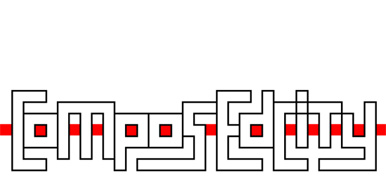|
intro / topic / projects / publications / organisation Topic: composing the city, in sound and space When we talk about urban sounds, we think of traffic, construction, alarm systems, etcetera. These 'sounds of modernity' are mostly perceived as noise and pollution. The distinction between sound and noise is often understood as the difference between the sounds that relate to one's direct, visual environment and sounds from "outside". For instance: if you walk through a street, a passing car will be perceived as sound, while the same car could be perceived ad noise while sitting in the garden. Coherence between what you see and what you hear is a crucial factor in the appreciation for it, as researched by Carles in 1999. Background noise, omnipresent in urbanized areas, leads to a lower appreciation of one's environment, and causes stress for people who constantly work and live in a noise polluted environment. In the Netherlands, sound is after chronic exhibition to particulate matter the largest environment-related threat of health. In 2007, the exhibition to sound has led to 2300 DALY's (Disability Adjusted Life Years: the amount of years spent with a disability) per 1 million inhabitants. There are two ways to deal with the problem of background noise. The first way - the most popular but the least interesting - is to minimalize the background noise. Manufacturers create more silent cars, planes, tarmac, pile drivers and so on, even research anti-sound, while urban planners create sound walls and buffer zones, isolating the city's interior from its traffic space. These are technical solutions, that are effective for its purpose but have negative aspects as well: sound walls restrict the drivers'notion of their environment, buffer zones do the same but also use valuable city space in an inefficient way. Thanks to this approach, a vast network of no-man's-land is created in the city, that is maintained and used at the minimum level. The second way is to create new foreground noise. Take a fountain on a plaza: it kills the background noise while creating a new unity in sound and space. If it's one of the few fountains in the city, it will strengthen the identity of the plaza. Of course the fountain is a known example, but also the sounds of boats, soccer fields, bridges, police cars, traffic lights and trees could be used to create site specific sounds, that help to orientate in the city and identify places. Strangely enough, this way of dealing with sound is hardly explored. The working field of landscape architecture is moving more and more into the loud reality of urban space, still the design of public space is mainly approached functionally and visually. Landscape architects should expand their "sonic toolbox", in order to improve the quality of urban environments. In order to do so, the integration of sound arts into public space is a logical step, just as the widely spread integration of visual arts into public space. Contemporary sound artists who have moved their work field into public space, are facing the same encounters as landscape architects do; the sound work is exposed to a political field, to spatial dynamics and social context. The most inspiring examples of sound works in public space react on this context, and deal with these dynamics. Some sound works even go one step further and use public space or a building itself as an instrument, instead of placing a "sound object" in it. In this approach, sound helps to understand the space, and intensifies its experience. Of course it's not clear how to "play" a building or a place as an instrument, or what to play.
for more information info@composedcity.org 28/10/2010 |
